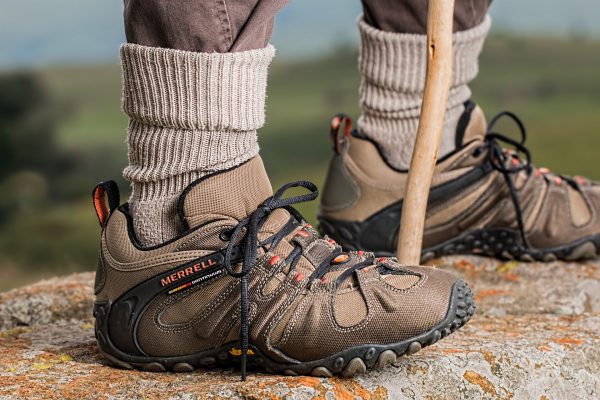Hiking is becoming a core part of our tourism experience in Nigeria, from the climb up Idanre Hills or Olomu Rock to the discovery of the suspended Lake at Ado Awaye or Marshall caves in Bauchi. The view of Nigeria’s Landscape is irresistible.
However, hikes can be treacherous and can lead to major accidents. The right shoes can make any hike a walk in the park and an enjoyable experience.
It’s not enough to wear trainers; hiking shoes and boots are made to specific specifications. They need to be waterproof, well-fitted and broken in (i.e. used before the trip). There are different hiking footwear based on the hike you intend to go for. Always make sure you ask the right question so you can pack the right gear.
Four types of hiking footwear
Hiking Sandals
Light, easy to use and great for walking down short, well-maintained trails. It is a great option for a casual hiker; they protect your feet from rough objects and have good traction (for grip to the surface climbed). But they do not protect the sides of your feet from bruising caused when it rubs against a rock or bushes. They are also not good for walking on wetlands. Hiking sandals have good arch supports, tough soles, Velcro straps and a little below the ankle. They are light and take up less space when packing for a hiking trip.
Trail/Hiking shoes
These are more multi-purpose in nature and excellent for a short day hike on an easy/smooth trail. Great for less demanding trails, sturdier than normal running shoes, lightweight and provide little ankle support. They are comfortable, water resistant, higher than Sneakers, require little time to break in, like a day and functional. Trail shoes have soft and flexible soles meant for uneven surfaces like sand and granite. They are not good for crossing streams, carrying heavy weights, long distances or climbing steep slopes.
Day hiking boots
These shoes are ankle high providing solid ankle support and great for hiking in dirt tracks and muddy/grassy trails. It can support light to medium additional weights from backpacks (less than 10 kg). It is not suitable for rocky and uneven terrain, has a great traction, fully waterproof and requires little break-in time. That means it needs to be worn for short hikes to enable it to conform to the shape of your leg before embarking on longer distances.
Backpacking boots
It is great for on and off trail hikes, multi-day trips, provides excellent ankle support, handling additional backpack weight (around 23 kg) and designed for long hikes under harsh condition. These have eyelets for the laces and sometimes there is a compromise of D-rings on the upper part of the shoe. That way the shoe doesn’t get caught in bushes, these boots usually have aggressive tread designs. They are hard to take off and have a stiff mid-sole that provides arch support. Backpacking boots are expensive, they have more insulation in them and are heavier than day hiking boots. They are durable and have a wider sole than day hiking boots. They look like work boots or military styled combat boots.
Mountaineering boots
If you are not climbing an actual mountain or trudging in the snow, stay away from these boots. While they provide excellent feet and ankle protection, high insulation and a waterproof covering, they are incredibly stiff. Mountaineering boots are not for visits to any national park e.g. Kainji National Park. These are heavier and less breathable than other hiking shoes. They are mainly for rocky and uneven terrain, but can assist with carrying heavier additional weight on any terrain.
Knowing the right shoe for the hiking trip you are embarking on is crucial to prevent twisted ankles or injuries to your feet. Once you’ve determined the weight, fit, toe protection, water resistance factor, choice of terrain, along with the materials used for the insole, mid-sole and the out-sole of the shoe, you can purchase the right hiking footwear you need. Don’t let your footwear stop you from enjoying a great holiday experience.


